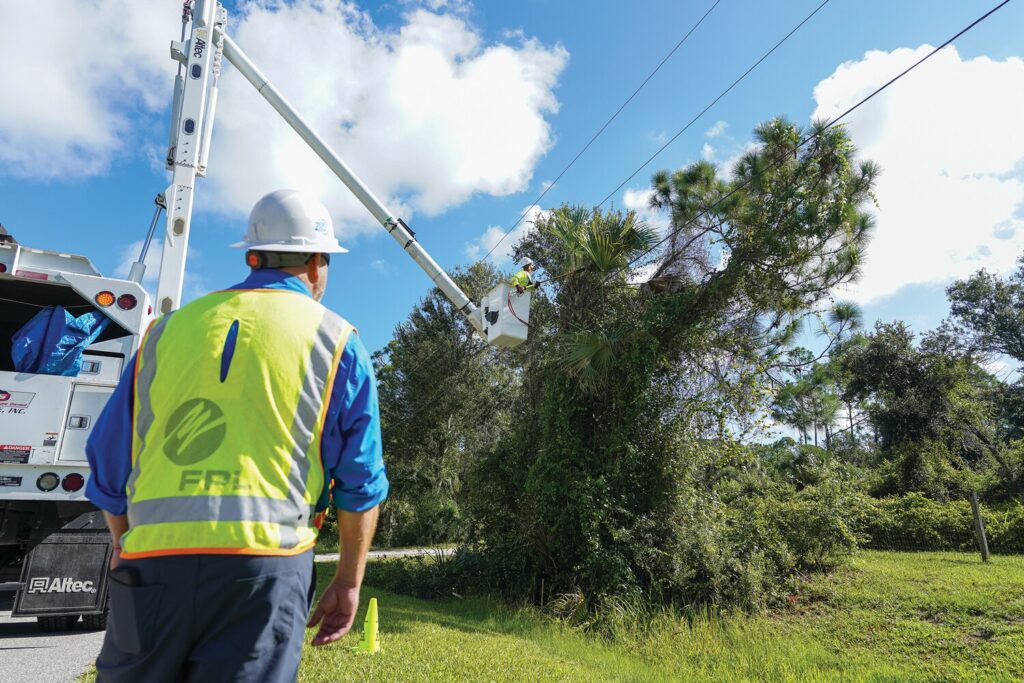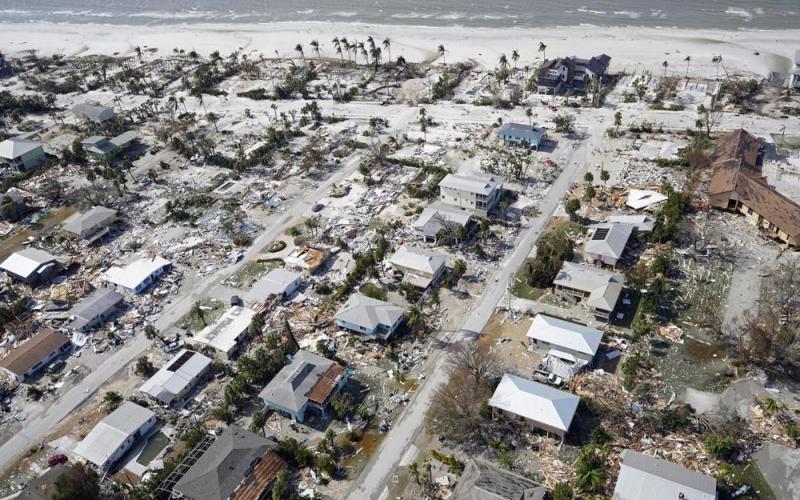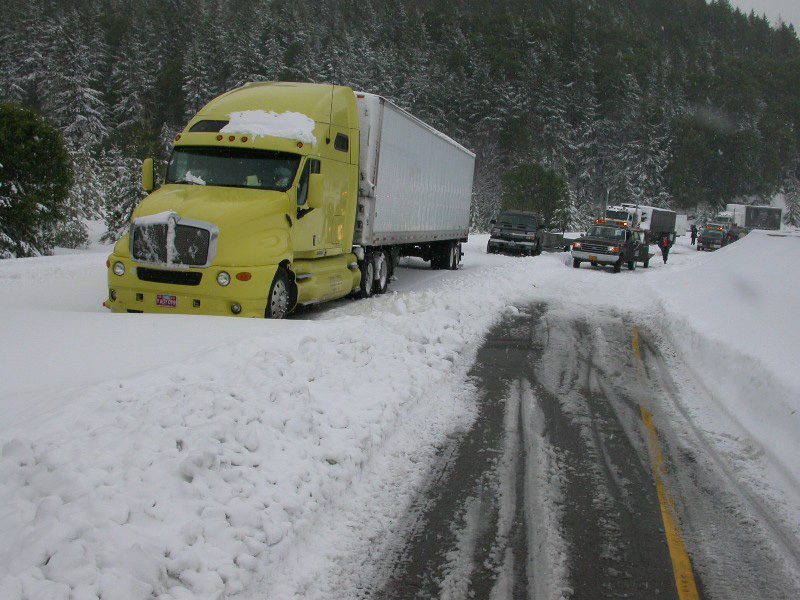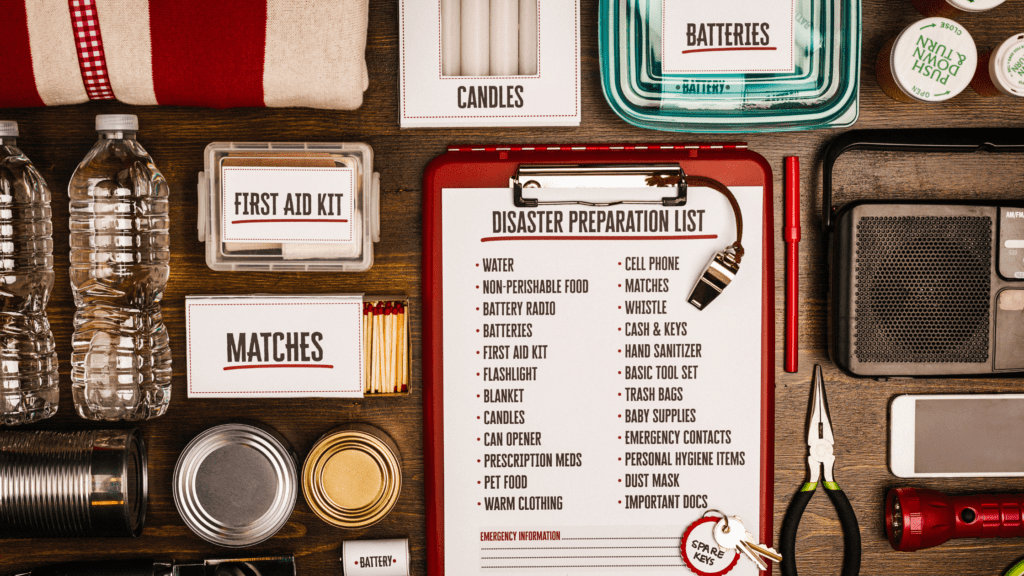BIG Special Discounts Available NOW! Check out our Products
Leader in Waste Management Solutions | PROUDLY MADE IN THE USA ![]()
Leader in Waste Management Solutions | PROUDLY MADE IN THE USA ![]()

As hurricane season sweeps across the Gulf and Atlantic coasts, emergency crews, linemen, and disaster response teams are gearing up for unpredictable weeks ahead. When nature strikes, access to basic human needs—like safe bathroom facilities—is often the first thing to disappear. That’s where Brief Relief becomes mission-critical.
Whether your team is restoring power, clearing roads, or providing aid, bathroom access can be nonexistent during storms. Flooded streets, power outages, and closed public buildings make traditional options unreliable or dangerous.
Health risks from improper waste disposal
Lower crew morale and comfort
Productivity loss from long detours just to find a restroom
Brief Relief provides portable urinal bags and disposable solid waste bags designed to be:
Leakproof and odor-sealing
Shelf-stable for years—perfect for emergency kits
OSHA-compliant and FEMA-accepted
Quick to deploy in vehicles, trailers, and field command posts
Our Field Lavatory Systems are trusted by FEMA contractors, municipal utility departments, and disaster relief nonprofits nationwide.
🚨 Utility Crews restoring power in storm zones
🚑 First Responders who need to stay mobile and focused
🚛 Truckers and Contractors rerouted to emergency sites
🏕️ Disaster Shelters and mobile response teams needing safe, hygienic solutions fast
According to the National Hurricane Center, the best time to prepare is before the storm arrives. Disasters don’t wait for you to find a restroom. Stock your crew, fleet, or emergency kits with Brief Relief now—so when the storm hits, your team is covered.
Shop Our Emergency-Ready Sanitation Kits Now
✔ Peace of mind
✔ Portable comfort
✔ Ready when it matters most

The need for high-quality disaster relief is vital, no matter where you live. Over the past few decades, natural disasters have killed between 40,000 and 50,000 people per year worldwide. Whether communities are leveled by tornadoes, displaced after hurricanes, or left without power after an earthquake, people who experience disaster can’t simply be left to figure it out themselves.
As a company dedicated to providing sanitary, portable toilet solutions for businesses, the military, and first responders, we understand the importance of having the best equipment, materials, and supplies available.
But what do support organizations really need to help survivors through this hardship? Let’s discuss the 6 Rs of disaster relief resources that support organizations need to have ready to bring to disaster sites.
First up? First aid. Especially in disasters that result in mass casualties and injuries. Relief organizations must assess the damage and determine the amount/type of first aid kits, medical equipment, and medications needed to treat the most pertinent injuries.
This can be extra challenging with significant infrastructure damage (think – destroyed or blocked roads, no running water, and no electricity).
Next, aid organizations need to be prepared with enough food and water. People can only go so long without water (no more than three days), so getting enough potable water for drinking and washing becomes a top priority. This can also be challenging to transport when thousands are impacted. The CDC recommends that each person have a gallon of daily water for drinking and sanitation.
Survivors also need access to non-perishable food items that can last without access to electricity. Easy to open, nourishing, and nutritious food must be available. And don’t forget – disasters don’t discriminate by age. Infants and babies need access to formula and soft foods as well.
Victims of disasters need access to portable, short-term shelter. Tents, tarps, blankets, and sleeping bags need to be set up in a space where families can be reunified.
This isn’t as simple as it sounds. Especially in areas where infrastructure has been significantly damaged, it can be challenging to find locations for temporary shelters that are safe, accessible, and have access to essential resources like water and sanitation.
Aid organizations must have a plan to provide portable bathrooms for disaster relief to keep conditions sanitary. That is – unless they want a health disaster to pair with a natural disaster. Some jaw-dropping innovations, such as WAG bags (waste alleviation and gelling bags), portable commodes, and bucket commodes, can make this easier. While not all portable bathrooms are created equal, Brief Relief offers the only NASA-developed gelling agent that deodorizes and solidifies waste within 10 seconds, leaving survivors with an easy, odor-free, sanitary way to go when bathrooms are unavailable.
The fantastic thing about these next-level portable bathroom solutions is that they can be more easily transported than bulky porta-potties or bathroom trailers. They also use eco-friendly disposable waste bags that can be purchased in large quantities and thrown away in the regular garbage. Relief organizations can even provide portable toilet privacy tents or entire portable lavatory systems that can be set up in minutes, serving private restrooms in a pinch.
Landlines and cellular networks can’t be relied on during a disaster. Relief organizations must coordinate efforts, stay updated on emergency alerts, and efficiently make decisions to adapt as the disaster progresses. Communication can make or break success. Radios and satellite phones are indispensable communication alternatives. These devices are designed to operate independently of local infrastructure, allowing communications to continue.
After a disaster, affected areas are often littered with debris, such as fallen trees, collapsed buildings, and damaged infrastructure. Trucks, bulldozers, and heavy machinery are needed to clear obstructions quickly and safely and repair damaged infrastructure. Large vehicles are also required to transport materials (tents, tarps, and supplies) to disaster-stricken areas and move personnel and supplies. This means being prepared with the correct equipment and the right amount of equipment for the specific disaster.
Responders will also need other recovery tools, such as gloves, ropes, ladders, masks, goggles, and other protective equipment. For some disasters, aid workers use thermal imaging cameras to locate and extract survivors.
When it comes to disaster relief, government relief agencies and other non-government organizations need to be able to count on the quality of their specialized resources and technologies. By equipping organizations like FEMA and NGOs with state-of-the-art medical supplies, innovative sanitation solutions, sustainable shelter options, and efficient logistical support, we empower them to respond effectively and expedite recovery efforts.
Join Brief Relief in supporting disaster relief efforts with innovative, sanitary portable restroom solutions. Together, we can ensure communities receive the essential resources they need to recover and thrive.

This comprehensive winter guide will feature vehicle readiness tips, winter maneuvering strategies, and essential emergency items. Brief Relief provides portable bathroom and shelter solutions designed specifically for professionals who are constantly on the move.
Winter Storm Heather 2024 was a stark reminder of winter weather’s uncertain and often hazardous nature. Truckers and first responders faced formidable challenges as the storm rendered roads impassable and disrupted critical operations. So much so that a 70-mile stretch of Interstate 80 was shut down. Closures like this stranded many semi-trucks and left many idle, leading to considerable economic repercussions for trucking companies, as idle trucks meant drivers weren’t earning, and companies weren’t making money.
Winter Storm Heather highlighted the critical need for preparedness for truckers, emergency responders, and disaster relief crews. Extreme conditions, from heavy snowfall to icy roads, pose personal safety risks and hamper crucial operations. Being prepared means quickly and effectively responding to ensure the safety and well-being of frontline workers.
For those who spend their workdays on the move, a vehicle is more than just a mode of transport—it’s a central hub of activity, a haven from the winter chill, and, at times, the only source of warmth. Ensuring your vehicle is winter-ready is critical to the safety of commercial drivers.
Key steps include:
For truck drivers, road workers, first responders, and disaster relief crews, winter brings many challenges that demand rigorous preparation. When snow and ice transform the landscape, these individuals are the lifelines of our roadways, and their safety and comfort are paramount.
A well-prepared roadside kit is essential for truckers and road crew professionals who contend with the challenges of winter travel. Your kit should equip a flashlight for those dark, wintry nights, a multi-tool for on-the-fly repairs, and a pocket knife, which can be crucial for cutting seat belts in an emergency. A comprehensive first-aid kit is a must-have, packed with band-aids, bandages, gauze, tourniquets, and ointments to manage burns and facilitate healing.
Given the unpredictable nature of winter weather, it’s essential to have non-perishable, energy-rich food items on hand. Protein bars, MREs (Meals, Ready-to-Eat), nuts, and candy can be vital in keeping energy and morale levels up if you’re waiting for help to arrive. Your kit should include thermal blankets, heat packs, a heavy jacket, and gloves to keep warm. Additionally, a compact snow shovel and traction mats are essential for digging out your vehicle and gaining traction on slippery surfaces.
Such a kit keeps you prepared for the unexpected, helping maintain safety and comfort until conditions improve or assistance reaches you.
Among these essentials, one must pay attention to a crucial component: the need for proper sanitation. Portable toilets are not just a convenience but necessary for truckers and road crews who spend hours in remote locations. The Waste Bag by Brief Relief is a prime example of a portable toilet solution tailored for truckers. It’s discreet, easy to use, and environmentally friendly, with a gelling agent that solidifies waste and neutralizes odors. This level of sanitation is critical, not just for personal hygiene but for environmental health as well.
A more advanced kit is advisable for those who may find themselves stranded or working in severe weather conditions. An enhanced kit incorporates the previously mentioned Waste Bag along with a portable toilet or portable toilet shelter designed for prolonged usage. These units are sturdy, offering a higher level of comfort and convenience. They are exceptionally vital for truckers on the road for days, road workers, and emergency personnel who work long shifts in stationary locations.
The presence of reliable portable toilets for commercial drivers serves several critical functions. Having a portable toilet shelter ensures that drivers and crews remain on-site during emergencies, maintaining operational continuity. It prevents the interruption of essential tasks for sanitation needs and safeguards against the health risks associated with unsanitary conditions.
Brief Relief designs portable toilets with the environment and user experience in mind. By providing a clean and private space, they uphold the dignity of workers while also preventing waste from contaminating nearby lands and waterways, which is crucial in winter when the spread of pathogens can be a concern.
As we continue to face the challenges of winter, having a well-thought-out roadside kit, complete with a reliable portable toilet solution, is not a luxury—it’s an essential aspect of road safety. By choosing products like Brief Relief’s Waste Bag and portable toilets, truck drivers, road workers, first responders, and disaster relief crews can remain focused on their vital roles, knowing their needs are met with solutions that offer safety, privacy, and respect for the environment. These products reflect a deep understanding of the unique requirements of mobile workers, such as truckers and emergency responders. Brief Relief’s commitment lies in providing technical solutions that genuinely improve working conditions in the field.
Winter Storm Heather 2024 showed us how powerful nature can be and how important it is to be ready for anything. Being prepared is vital for people in the trucking, emergency response, or disaster relief sectors. Being prepared means making sure your vehicles can handle the harsh winter weather. You must also have the right tools and supplies to keep you safe and comfortable. Make sure to visit the Brief Relief Shop for waste bags, portable bathrooms, and commode systems. Workers who prepare well with essential items and solutions can confidently face winter challenges.

Wesco/Anixter is a leading provider of B2B distribution, logistics services, and supply-chain solutions. They also work in storm-related restoration efforts, particularly in the utilities business. A Fortune 200 company, they have 18,000 employees globally and $22 billion in revenue.
Working with major utility companies during natural disasters, including restoration efforts and the mitigation of major storms and fires, Wesco/Anixter is the largest utility distributor in the market focused on live post-storm restoration efforts. Their goal is to work with major utility providers to quickly restore power and utilities services to places where it has been knocked out by natural disasters.
Logistical concerns for these types of events are massive, and Wesco/Anixter has to have a tremendous infrastructure in place to ensure they can restore utilities as quickly as possible. The first step is response readiness, because planning capabilities are limited. They might know ahead of time which state a storm is going to hit, but it’s impossible to predict which communities will be affected.
Setup is key. Establishing camps and providing the supplies necessary for survival are vital yet massive undertakings. These camps are the nerve centers for the restoration, providing supplies and equipment for thousands of workers who will be on site. Restoration efforts often include a massive amount of resources. Bringing in dozens of campers, electrical equipment, ice trucks, porta-potties, generators, and emergency supplies of food and water is the first job. Maintaining an inventory of these critical supplies is crucial.
The first three to five days are critical to the restoration efforts and whether the project will be successful. Often, there is not only no power, but, if cell towers are down, no real communications capabilities. That leaves satellite phones for Wesco/Anixter to call in the specific supplies they need.
Challenges on the front end don’t just include supplies, but also manpower. Recruitment efforts often extend all over the country when thousands of utility workers are needed, well beyond the number stationed locally. Many are hesitant to work on Day 1 under the conditions of no power, running water, or communication with the outside world. Many times, those initial responders won’t yet have ways to satisfy basic needs like food, water, and using the bathroom.
Having an inadequate number of people willing and able to provide first-line help effectively means failure for the restoration efforts. Time is of the essence when delays could mean the difference between life and death for some of the people affected.
For Wesco/Anixter, solutions mean taking action. They express appreciation and interest in the value of their products, providing solutions for those first crucial hours so responders can have their basic needs met from the outset. Brief Relief’s portable bathroom products include liquid and solid waste bags, commode systems, and portable privacy shelters, along with all of the accessories needed to provide supplies for safe and sanitary efforts.
Brief Relief is a top manufacturer of portable restroom products, providing best-in-class worksite solutions to aid in the safety and productivity of employees. Out in the field, in storm-, fire-, or disaster-damaged areas, Brief Relief products can provide an emergency stopgap solution when restroom facilities are limited or unavailable. This effectively eliminates a major barrier for utility-worker recruitment efforts, improves efficiency, and reduces the time to complete restoration efforts.
Brief Relief products can be used anywhere. Line workers often won’t even have to come out of their lifts to take care of their business, saving critical time and energy so they can keep their focus on restoring power, cellular service, and water to the area.
Brief Relief products are safe, sanitary, easy to use, discreet, cost effective, and help increase productivity. You can learn more about Brief Relief, their products, and how to obtain a supply of products at briefrelief.com.

When was the last time you updated your disaster prep kit? That is — if you have one at all. According to a 2020 Center for Disease Control and Prevention (CDC) survey, only one in three people have an emergency supply kit. Having a well-stocked kit can make a big difference in the event of a hurricane, so it’s important to go beyond bandages and bottled water. Think you’ll be ready when disaster strikes? See which of our these five emergency prep tools you have in your kit.
Electricity is often the first thing to go during a natural disaster, and having a way to generate energy can make or break a situation. Classic generators can come with a hefty price tag, and portable options aren’t ideal for wet conditions. Solar chargers are a more affordable, flexible option, and many of them are designed to be water-resistant.
With solar chargers, you can rely on your power bank as long as you have access to sunlight. Some models are even made for low-light conditions, so you don’t have to worry about overcast days after a hurricane.
According to the CDC, flashlights are the most common item people keep in their emergency supply kits, but it’s important to have functional, convenient gear in a disaster. Level up your kit with wearable body lamps that keep your hands free for whatever comes your way. Wearing a headlamp or light-up armband can help you navigate in the dark without worrying about dropping your flashlight or juggling bulky supplies.
Because they’re always with you, body lamps are also a convenient way to increase your own visibility to those around you, such as family members or first responders. When the power goes out, you can rely on your body lamps to avoid fumbling around in the dark — just remember to pack extra batteries or charge them when a major storm is approaching.
One of the first steps to take when a hurricane approaches is securing a safe water supply, with extreme weather having the potential to contaminate water sources. Severe flooding can shut down water treatment plants, damage pipes, and introduce dangerous chemicals into your home’s tap water. Setting up a store of bottled water is a great way to start, but having a water purifier on hand ensures that you’ll never run out.
Quality water filters can often filter hundreds to thousands of gallons of water, removing microplastics, parasites, and even lead. Options ranging from lightweight straw filters for personal use to large, communal gravity filters make it easy for you to pick the right option for your kit.
Radios allow you to access vital weather updates during a natural disaster even when you can’t access the news on your phone or TV. When choosing your radio, consider opting for a model with a hand-crank generator. By putting in a bit of elbow grease, you can trust that your radio will always have power, even if you run out of batteries. Many models also have regular batteries and solar panels, giving you plenty of options to stay connected with critical weather information.
When preparing for a disaster, thinking about where you’ll go number two is rarely the first thing on your mind. But the need to use the bathroom stops for no one, not even a hurricane. Many people turn off their main water valve during a hurricane; this is a great way to prevent flooding, but it also means sacrificing the comfort of a functional toilet. During a disaster, you may not know how long you’ll be without functioning plumbing, which makes having a clean, comfortable emergency toilet such a game-changer.
While you may have seen makeshift toilets made from buckets and cat litter, there’s a better way to handle your bathroom emergencies in the face of a true disaster. Modern portable toilets like the briefcase commode are tidy and discreet, making them easy to store and even easier to use. The best portable commodes are lined with durable waste bags, which contain a high-tech powder that neutralizes odors and eliminates biohazards. Because the powder turns into a gel when it interacts with waste, you can simply seal the bags up and dispose of them like regular trash without worrying about tears or spills.
Emergency preparedness is all about having the tools to thrive when the conditions aren’t so perfect. Brief Relief’s line of portable commodes can help you bring dignity and comfort to even the most disastrous of situations.
Although Brief Relief’s innovative, sanitary products are great in an emergency, they aren’t just for worst-case scenarios. They’re easy to transport and clean, so you can bring them with you to remote job sites, campsites, or any other situation where you need to go while on the go. If you’re ready to invest in your comfort and peace of mind, explore our full product line.